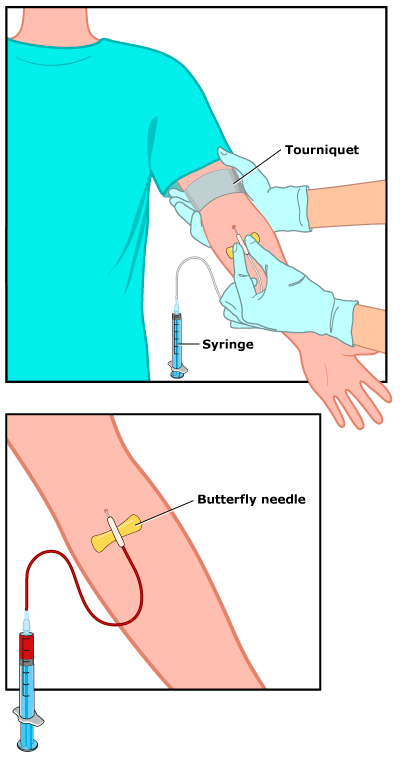How to Carry Out Genotype Test Using Electrophoresis Machine
Blood Test: Hemoglobin Electrophoresis

What It Is
A hemoglobin electrophoresis test measures the different types of hemoglobin in the bloodstream. Hemoglobin, the oxygen-carrying protein inside red blood cells, comes in many molecular forms, some normal and some abnormal. Normal hemoglobin carries and releases oxygen efficiently, while abnormal hemoglobin doesn't.
The most common types of normal hemoglobin are:
- Hemoglobin F, the normal type found in fetuses and newborns. It's replaced by hemoglobin A soon after birth.
- Hemoglobin A, the normal type most commonly found in healthy kids and adults.
The most common types of abnormal hemoglobin are:
- Hemoglobin S, C, D, E, M
If a person inherits the genes that cause production of too much of an abnormal type of hemoglobin, or not enough normal hemoglobin, it can lead to blood disorders, including:
- Sickle cell disease. Hemoglobin S is responsible for most types of sickle cell disease, a condition in which the red blood cells have a crescent or sickle shape that causes them to break down too quickly and clog small blood vessels.
- Thalassemias. This group of genetic blood diseases affects the amount and type of hemoglobin made (for example, too much hemoglobin F and not enough hemoglobin A in a child).
The electrophoresis process takes advantage of the fact that hemoglobin types have different electrical charges. During electrophoresis, an electrical current is passed through the hemoglobin in a blood sample, which causes the hemoglobin types to separate at different rates and form bands. By comparing the pattern formed with that of a normal blood sample, doctors can see the types and quantities of hemoglobin present in the blood sample.
Why It's Done
A doctor may order hemoglobin electrophoresis to help diagnose diseases (called hemoglobinopathies) involving abnormal hemoglobin production, such as sickle cell disease and thalassemia.
Doctors also may order the test when a child has family history of a hemoglobinopathy or is found to have anemia that isn't due to a more common cause, such as iron deficiency.
In many states, a hemoglobin electrophoresis is performed as part of a series of newborn screening blood tests, primarily so that kids with sickle cell anemia can be diagnosed, monitored, and treated early to prevent potentially life-threatening complications.
Preparation
No special preparation is necessary. However, if your child has had a transfusion in the last 3 months, hemoglobin levels may be altered, so let the doctor know.
On the day of the test, having your child wear a T-shirt or short-sleeved shirt can make things easier for your child and the technician who will be drawing the blood
The Procedure
A health professional usually draws the blood from a vein. For an infant, the blood may be obtained by puncturing the heel with a small needle (lancet).
If the blood is being drawn from a vein, the skin is cleaned with antiseptic and an elastic band (tourniquet) is placed around the upper arm to apply pressure and cause the veins to swell with blood. A needle is inserted into a vein (usually in the arm inside of the elbow or on the back of the hand) and blood is withdrawn and collected in a vial or syringe.
After the procedure, the elastic band is removed, then the needle is removed and the area is covered with cotton or a bandage to stop the bleeding. Collecting the blood for the test will only take a few minutes.


What to Expect
Either method (heel or vein withdrawal) of collecting a blood sample is only temporarily uncomfortable and can feel like a quick pinprick. Afterward, there may be some mild bruising, which should go away in a day or so.
Getting the Results
The blood sample will be processed by a machine. The results are usually available after 1-2 days.
Risks
Hemoglobin electrophoresis is considered a safe procedure. However, some problems can occur with having blood drawn, including:
- fainting or feeling lightheaded
- hematoma (blood accumulating under the skin causing a lump or bruise)
- pain associated with multiple punctures to locate a vein
Helping Your Child
Having a blood test is relatively painless. Still, many kids are afraid of needles. Explaining the test in terms your child can understand might help ease some of the fear.
Allow your child to ask the technician any questions he or she might have. Tell your child to try to relax and stay still during the procedure, as tensing muscles and moving can make it harder and more painful to draw blood. It also may help for your child to look away when the needle is being inserted into the skin.
If You Have Questions
If you have questions about the hemoglobin electrophoresis test, speak with your doctor. You can also talk to the technician before the procedure.
Reviewed by: Steven Dowshen, MD
Date reviewed: July 2014
How to Carry Out Genotype Test Using Electrophoresis Machine
Source: https://www.rchsd.org/health-articles/blood-test-hemoglobin-electrophoresis/